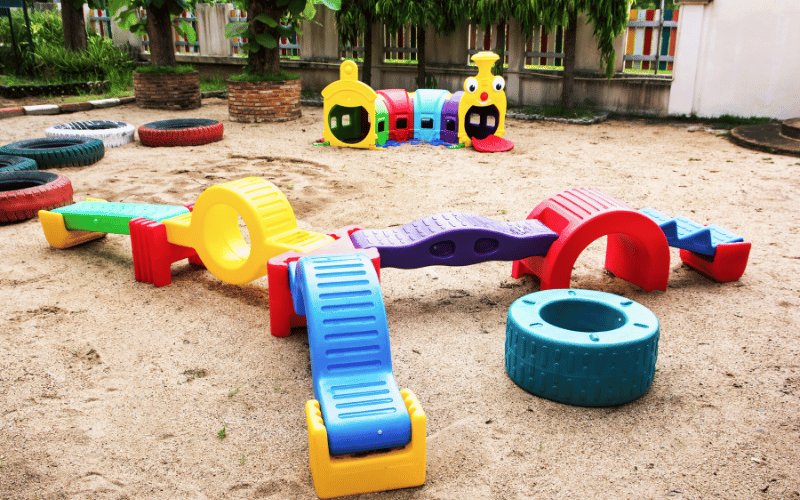Outdoor play brings children a unique kind of joy that no indoor activity can replicate. It gets their bodies moving, strengthens their muscles, and improves coordination, all while keeping them active and healthy. Beyond the physical benefits, outdoor play fosters social connections as kids learn to share, take turns, and collaborate with others. Emotionally, it provides an outlet for energy, reduces stress, and builds confidence as children explore their surroundings and test their limits. Whether they’re climbing, running, or simply imagining, outdoor play creates a foundation for well-rounded development.
But the magic of outdoor play doesn’t happen by chance—it depends on the right equipment. Choosing the right play equipment goes far beyond aesthetics or price. Safety should always come first, ensuring that every swing, slide, and climbing structure is designed to protect children from harm. Developmental benefits matter just as much. The best equipment challenges kids at the right level, encouraging growth in physical skills, problem-solving, and creativity. And let’s not forget long-term value. High-quality materials and thoughtful designs ensure that the equipment lasts for years, providing countless hours of play and joy.
When you combine the joy of outdoor play with the right equipment, you create an environment where children can thrive. It’s not just about play—it’s about giving kids the tools they need to grow, connect, and discover the world around them.
Table of Contents
ToggleSafety First: Essential Considerations
Safety is the cornerstone of any outdoor play environment. By focusing on key safety measures, you can create a space where children can explore and play with confidence. From understanding industry standards to choosing the right materials, every decision plays a role in keeping kids safe.
Understanding Safety Standards
When selecting outdoor play equipment, look for certifications from reputable organizations such as the American Society for Testing and Materials (ASTM) and the Consumer Product Safety Commission (CPSC). These certifications ensure that the equipment meets rigorous safety guidelines for design, materials, and durability. For example, ASTM standards cover everything from the spacing between bars on climbing structures to the height of guardrails on slides. CPSC guidelines focus on preventing hazards like entrapment or sharp edges. Choosing equipment with these certifications gives you peace of mind that it’s been tested for safety and reliability.
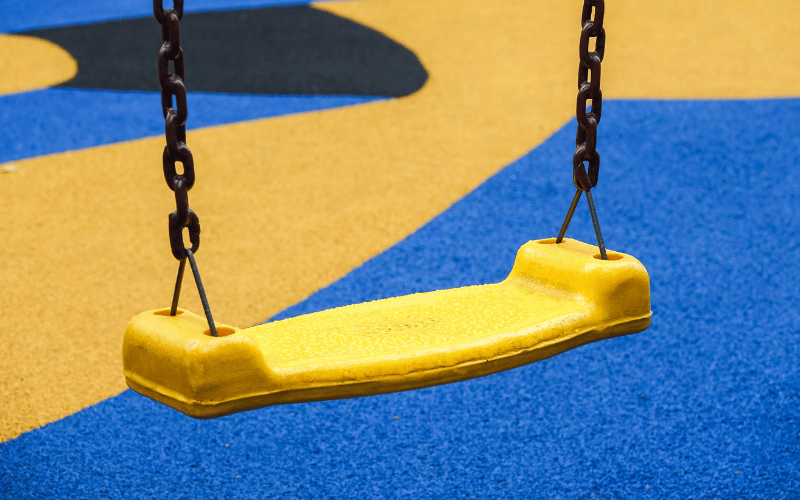
Age-Appropriate Equipment
Matching equipment to the developmental stages of children is critical for safe play. For toddlers, look for low platforms, short slides, and easy-to-grip handles that support their growing motor skills. Preschoolers benefit from slightly more challenging features like small climbing walls or balance beams, which help build coordination and confidence. Older children need equipment that offers greater physical challenges, such as monkey bars, taller slides, or rope climbers. Avoid mixing age groups on the same equipment, as younger children may struggle with features designed for older kids, increasing the risk of injury.
Safe Surfacing Materials
The right surfacing material can make all the difference in cushioning falls and preventing injuries. Loose-fill materials like wood mulch or engineered wood fiber are cost-effective and provide good shock absorption, but they require regular raking to maintain an even surface. Rubber mulch offers a longer-lasting option with excellent cushioning, though it comes at a higher upfront cost. Sand is another popular choice, but it can scatter easily and may require frequent replenishment. For a low-maintenance solution, consider poured-in-place rubber or rubber tiles, which provide consistent coverage and durability. Whichever material you choose, ensure it’s installed at the proper depth—typically 6-12 inches, depending on the equipment height.
Installation and Maintenance
Proper installation and regular maintenance are non-negotiable when it comes to safety. Always follow the manufacturer’s installation guidelines or hire a professional to ensure the equipment is securely anchored and level. Check for hazards like exposed bolts, rust, or splinters, and address them immediately. Regularly inspect moving parts like swings or hinges to ensure they function smoothly and safely. Don’t forget to maintain the surfacing material—rake loose-fill options, clean rubber surfaces, and replace worn-out areas as needed.
By prioritizing safety standards, choosing age-appropriate equipment, selecting the right surfacing materials, and committing to regular maintenance, you create a play environment where children can enjoy themselves without unnecessary risks. Safety isn’t just a checklist—it’s the foundation of every great play space.
Types of Playground Equipment: What to Choose
Choosing the right playground equipment means balancing fun, safety, and developmental benefits. Each type of equipment serves a unique purpose, so understanding the options and their features will help you create a well-rounded play space that meets the needs of all children.
Swings
Swings are a playground classic, and they come in options for every age group. Standard belt swings work well for older children who have the coordination to pump their legs and maintain balance. For toddlers, bucket swings with high backs and safety straps provide the support they need to swing securely. Baby swings, with their fully enclosed seats, are perfect for the youngest children, offering a gentle introduction to the joy of swinging.
When choosing swings, consider the materials. Metal chains coated in plastic reduce the risk of pinched fingers, while durable seats made of rubber or high-density plastic withstand years of use. Ensure the swing set frame is made from sturdy materials like powder-coated steel or treated wood to resist weathering and wear.
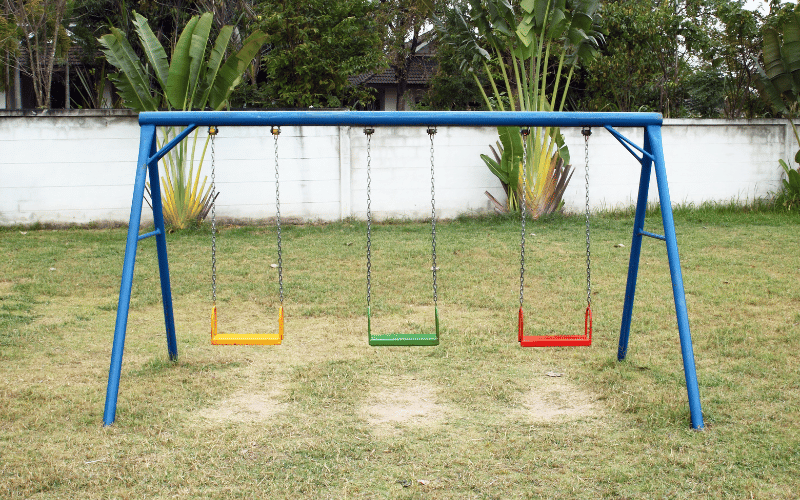
Slides
Slides are a playground favorite, but not all slides are created equal. Open slides, with their straight or gently curved designs, are great for younger children who need a clear view of their path. Tube slides, on the other hand, add an element of adventure and are better suited for older kids who enjoy the thrill of enclosed spaces.
When selecting a slide, pay attention to the height and incline. For toddlers, a slide no taller than 4 feet with a gentle slope is ideal. Older children can handle taller slides with steeper inclines, but make sure the landing area is well-padded with appropriate surfacing material. Look for slides made from UV-resistant plastic, which stays cool in the sun and resists cracking over time.
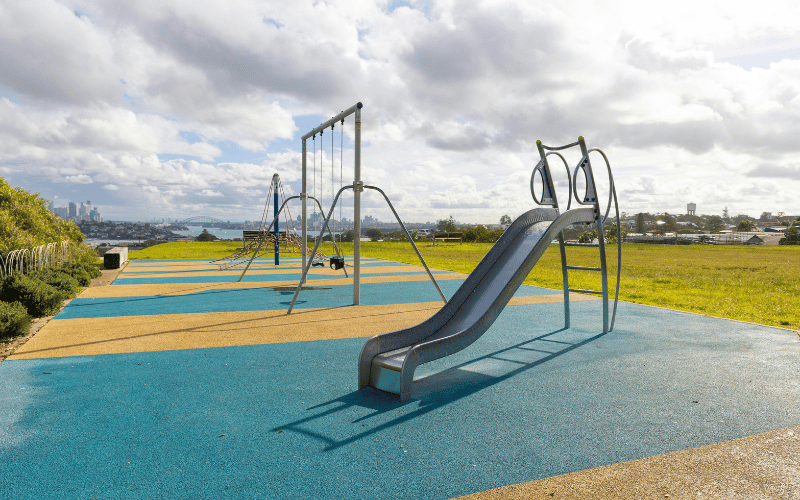
Climbing Structures
Climbing structures challenge children physically and mentally, helping them build strength, coordination, and problem-solving skills. Rock walls, ladders, and climbing nets each offer unique benefits. Rock walls encourage strategic thinking as kids plan their next move, while ladders and nets improve balance and upper-body strength.
Material choice matters here. Metal climbing structures are durable and weather-resistant but can get hot in direct sunlight. Plastic options are lightweight and safe for younger children but may not offer the same level of challenge. Rope climbers provide flexibility and a tactile experience, making them a favorite for older kids who enjoy more dynamic play.
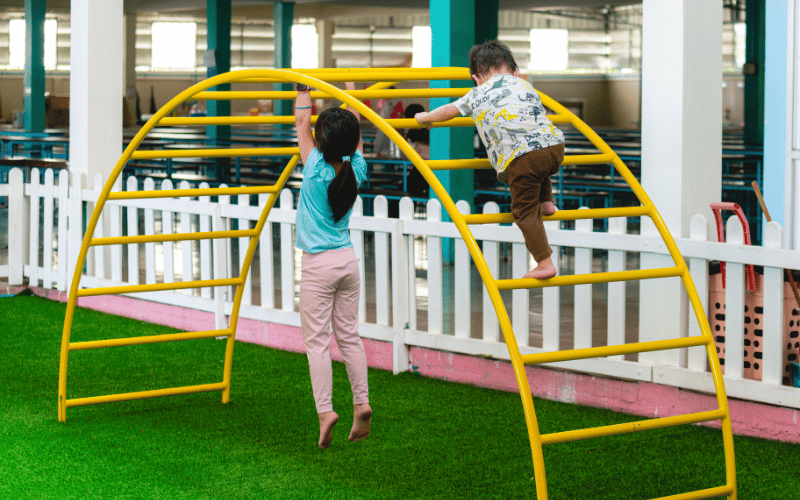
Imaginative Play Equipment
Imaginative play equipment sparks creativity and storytelling, turning a playground into a world of endless possibilities. Playhouses give children a space to pretend they’re running a store, cooking in a kitchen, or living in a castle. Adventure tables with sand, water, or building blocks encourage sensory exploration and collaborative play.
When choosing imaginative play equipment, look for features that invite open-ended use. A playhouse with multiple entry points, for example, allows kids to create their own games and scenarios. Durable materials like weather-resistant wood or high-quality plastic ensure the equipment can handle years of imaginative adventures.
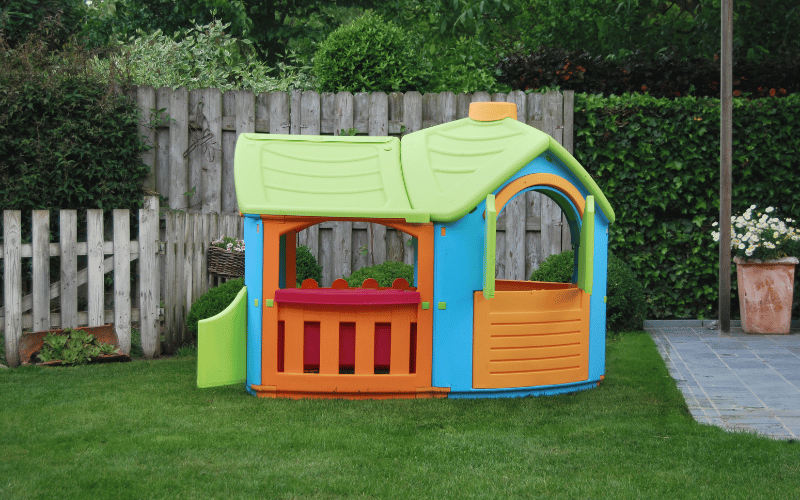
Sports Equipment
Sports equipment adds an active element to any playground, encouraging teamwork and physical fitness. A basketball hoop can turn a simple driveway into a court for friendly games, while soccer goals provide endless opportunities for running, kicking, and scoring. Multi-sport setups, which combine features like hoops, nets, and climbing walls, maximize space and versatility.
When selecting sports equipment, prioritize durability. Look for hoops with adjustable heights to accommodate different age groups and goals made from rust-resistant materials for outdoor use. Ensure the area around the equipment has enough space for safe play and is free from obstacles.
By carefully selecting swings, slides, climbing structures, imaginative play equipment, and sports setups, you can create a playground that offers something for everyone. Each piece of equipment plays a role in fostering physical, social, and creative development, making your play space a hub of activity and growth.
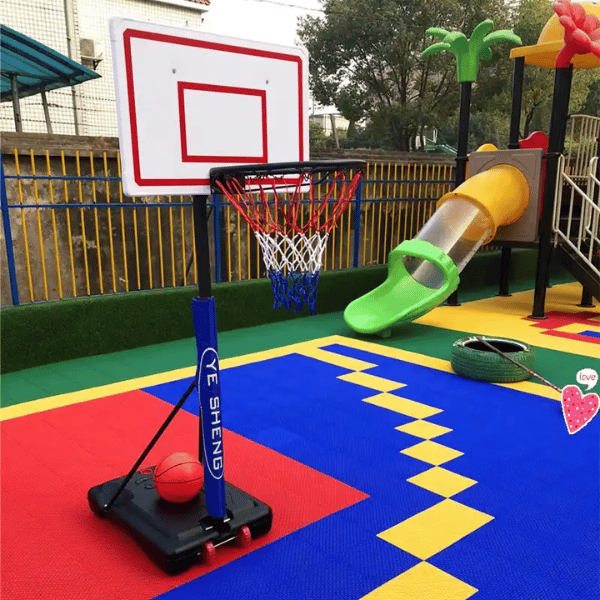
Space and Budget Planning
Creating the perfect play area starts with thoughtful planning. By assessing your space, setting a realistic budget, and deciding on installation methods, you can ensure your playground meets your needs without unnecessary surprises.
Assessing Your Space
Start by measuring your backyard or designated play area. Don’t just focus on the immediate space—think about how the area might evolve as your children grow. For example, a toddler might only need a small swing set now, but as they get older, you may want to add climbing structures or sports equipment. Leave room for future additions to avoid overcrowding or the need to relocate equipment later.
Pay attention to the layout of your space. Look for flat, level ground to ensure safe installation and play. Avoid areas near hazards like driveways, pools, or low-hanging tree branches. If your yard has uneven terrain, consider leveling it or choosing equipment designed for sloped areas, such as modular playsets with adjustable bases.
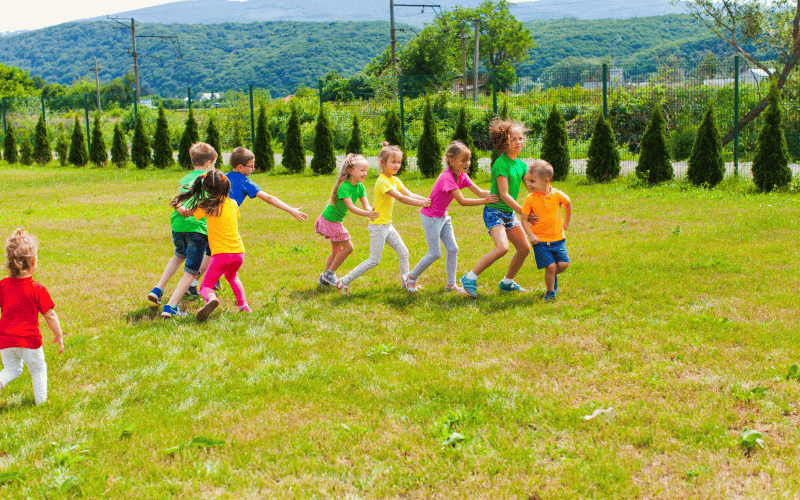
Setting a Realistic Budget
When planning your budget, balance quality with affordability. High-quality equipment may cost more upfront, but it often lasts longer and requires less maintenance, saving you money in the long run. For example, a powder-coated steel swing set might cost more than a basic wooden one, but it resists rust and weather damage, making it a better investment over time.
Don’t forget to factor in additional costs like surfacing materials, installation, and maintenance. For instance, rubber mulch may have a higher initial cost than wood chips, but it lasts longer and requires less frequent replacement. If your budget is tight, prioritize essential equipment like swings or slides and add more features later as funds allow.
DIY vs. Professional Installation
Deciding between DIY and professional installation depends on your skills, time, and budget. DIY installation can save money, but it requires careful attention to detail and a willingness to follow instructions precisely. If you’re handy and have the right tools, assembling a small swing set or slide might be manageable. However, larger or more complex structures, like multi-level playsets or climbing walls, can be challenging to install correctly without professional help.
Professional installation ensures the equipment is set up safely and securely. Installers have the expertise to anchor structures properly, level uneven ground, and meet safety standards. While this option adds to your overall cost, it provides peace of mind that your play area is safe and ready for use.
By assessing your space, setting a realistic budget, and weighing the pros and cons of installation methods, you can create a play area that fits your needs and grows with your family. Thoughtful planning ensures your investment pays off in years of safe, joyful play.
Materials and Durability
The materials you choose for your play equipment directly impact its longevity, safety, and overall appeal. Each material comes with its own strengths and maintenance requirements, so understanding these details will help you make the best choice for your play space.
Plastic Equipment
Plastic play equipment offers several advantages, especially for younger children. Its UV resistance ensures that bright colors won’t fade under the sun, keeping your playground vibrant for years. Plastic is also low-maintenance—simply wipe it down with soap and water to keep it clean.
Additionally, plastic is weather-resistant, meaning it won’t rust or splinter like other materials. This makes it an excellent choice for slides, toddler playhouses, and smaller climbing structures. However, always check for high-quality, BPA-free plastic to ensure safety and durability. Avoid thin or brittle plastics that may crack over time, especially in extreme temperatures.
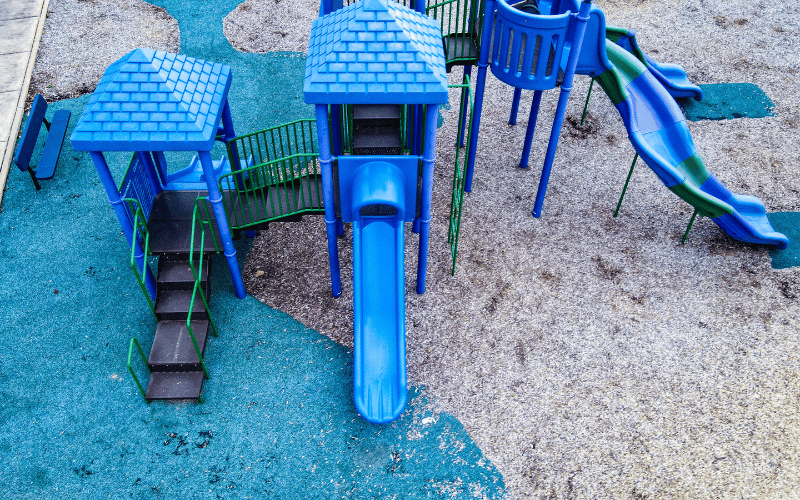
Metal Equipment
Metal equipment stands out for its strength and ability to handle heavy use, making it ideal for swings, monkey bars, and larger climbing structures. To prevent rust, look for powder-coated steel or galvanized metal, which provides a protective layer against moisture and weathering.
Regular maintenance is key to keeping metal equipment in top shape. Inspect for signs of rust or chipped coating, and touch up any exposed areas with rust-resistant paint. If you live in a coastal area with salty air, consider additional protective measures, as salt can accelerate corrosion.
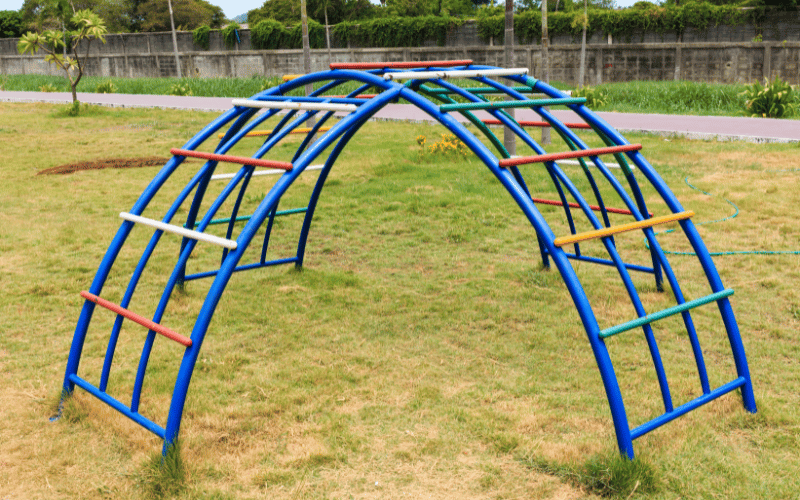
Wood Equipment
Wooden play equipment brings a natural, timeless aesthetic to any backyard. Cedar and redwood are popular choices because they naturally resist rot and insects, while pressure-treated pine offers an affordable alternative with added durability.
However, wood requires more maintenance than plastic or metal. To keep it looking its best, apply a weatherproof sealant every 1-2 years and check for splinters, cracks, or loose bolts. Sand down rough edges to prevent injuries and replace any damaged pieces promptly. Wood’s warmth and charm make it a favorite for many families, but it’s important to commit to regular upkeep to ensure its longevity.
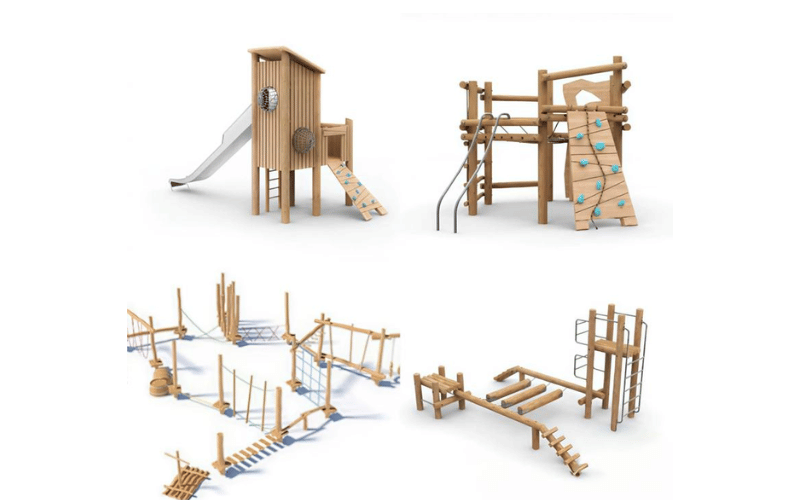
Eco-Friendly Options
For those looking to create a sustainable play space, eco-friendly materials offer a great solution. Many manufacturers now use recycled plastic or rubber to create durable, weather-resistant equipment. For example, recycled rubber mulch provides excellent cushioning for falls while repurposing old tires.
Some companies also offer play structures made from sustainably sourced wood or composite materials that combine wood fibers with recycled plastic. These options reduce environmental impact while maintaining the durability and safety you need.
By understanding the benefits and maintenance needs of plastic, metal, wood, and eco-friendly materials, you can choose equipment that aligns with your priorities and stands the test of time. The right materials not only enhance the play experience but also ensure your investment lasts for years of joyful use.
Designing an Engaging Play Area
An engaging play area goes beyond just equipment—it’s about creating a space that invites exploration, accommodates diverse needs, and provides comfort for children and caregivers alike. Thoughtful design ensures that every child can enjoy the space while fostering creativity, activity, and connection.
Activity Zones
Divide your play area into distinct zones to cater to different types of play. For active play, include equipment like swings, slides, and climbing structures that encourage movement and physical challenges. Dedicate another area to quiet activities, such as a shaded nook with benches or a sandbox where kids can relax and focus.
Imaginative exploration deserves its own space as well. Add playhouses, adventure tables, or open areas where children can create their own games and stories. For example, a small corner with logs, rocks, and loose parts can transform into a pirate ship or a magical forest in the minds of young adventurers. Clearly defined zones help children transition between activities and make the most of their playtime.
Incorporating Shade and Weather Protection
Comfort is key to keeping kids and caregivers happy during playtime. Incorporate shade and weather protection to ensure the space is usable year-round. Install canopies or shade sails over high-traffic areas like swings and slides to protect children from the sun.
If you have natural shade, such as trees, position benches or quiet zones beneath them for a cool retreat. For areas without natural coverage, consider adding pergolas or umbrellas. In regions with frequent rain, a small covered play area can keep kids active even on wet days. Weather protection not only enhances comfort but also extends the usability of your play area.
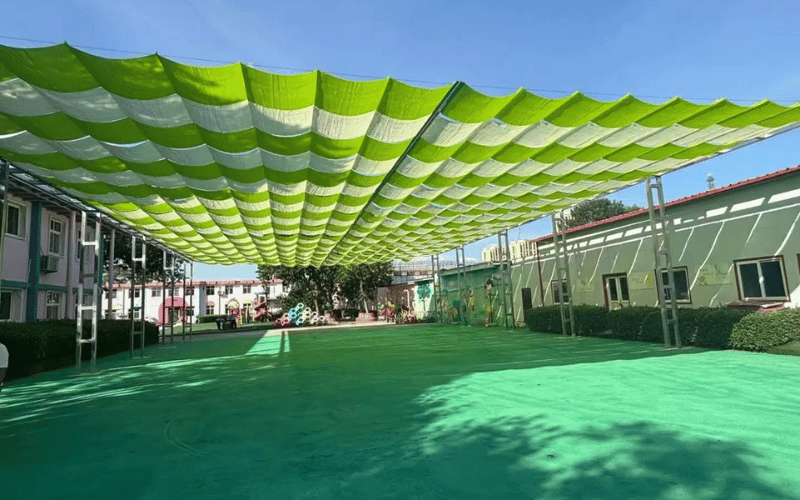
Comfort is key to keeping kids and caregivers happy during playtime. Incorporate shade and weather protection to ensure the space is usable year-round. Install canopies or shade sails over high-traffic areas like swings and slides to protect children from the sun.
If you have natural shade, such as trees, position benches or quiet zones beneath them for a cool retreat. For areas without natural coverage, consider adding pergolas or umbrellas. In regions with frequent rain, a small covered play area can keep kids active even on wet days. Weather protection not only enhances comfort but also extends the usability of your play area.
Accessibility for All
Inclusivity should be a priority in any play area design. Ensure that children of all abilities can enjoy the space by incorporating accessible features. Ramps and wide pathways make it easier for children using wheelchairs or mobility aids to navigate the area.
Adaptive swings, which provide extra support, allow children with physical disabilities to experience the joy of swinging. Sensory panels with textures, sounds, and interactive elements engage children with sensory processing needs. By designing with accessibility in mind, you create a space where every child feels welcome and included.
Natural Elements
Natural elements add beauty and a sense of wonder to any play area. Use landscaping to enhance the environment and encourage exploration. For example, plant shrubs or flowers around the perimeter to create a natural boundary, or add a small garden where children can learn about plants and insects.
Incorporate features like boulders, logs, or a small hill to provide opportunities for climbing, balancing, and imaginative play. A winding path made of stepping stones or wood chips can lead children on an adventure through the space. Natural elements not only enrich the play experience but also foster a connection to the outdoors.
By designing an engaging play area with activity zones, shade, accessibility, and natural elements, you create a space that inspires creativity, inclusivity, and joy. Thoughtful planning ensures that every child can find their own adventure while staying comfortable and safe.
Maintaining Your Playground
A well-maintained playground not only ensures safety but also extends the life of your equipment. By committing to regular inspections, proper cleaning, and seasonal care, you can keep your play area in top condition for years of enjoyment.
Routine Inspections
Inspecting your playground regularly is essential to catch potential issues before they become hazards. Start by checking for wear and tear on all equipment. Look for cracks in plastic slides, splinters or rot in wooden structures, and rust or chipped paint on metal components.
Pay close attention to moving parts like swing chains, hinges, and climbing nets. Ensure bolts and screws are tight, and replace any that are missing or damaged. For surfacing materials, rake loose-fill options like mulch or sand to maintain even coverage and proper depth. A quick weekly inspection, combined with a more thorough monthly check, can prevent small problems from escalating into costly repairs.
Cleaning Practices
Keeping your playground clean not only improves its appearance but also ensures a safe and hygienic environment for children. For plastic equipment, use a mild soap and water solution to remove dirt and grime. Avoid harsh chemicals that can degrade the material or leave behind harmful residues.
Metal equipment requires similar care, but be sure to dry it thoroughly after cleaning to prevent rust. For wooden structures, use a soft brush to remove dirt and debris, and apply a weatherproof sealant every 1-2 years to protect against moisture and UV damage. Don’t forget to clean surfacing materials as well—rake out debris from mulch or sand, and hose down rubber surfaces to remove dirt and bacteria.
Seasonal Maintenance
Seasonal changes can take a toll on your playground, so it’s important to adjust your maintenance routine accordingly. In winter, prepare for freezing temperatures by removing any water from equipment to prevent ice buildup. Cover metal components with protective wraps if you live in an area with heavy snow or frost. For wooden structures, check for cracks or splits that could worsen in cold weather, and reapply sealant if needed.
In summer, inspect equipment for heat-related issues. Plastic slides and metal surfaces can become dangerously hot in direct sunlight, so consider adding shade structures or applying heat-resistant coatings. Check for UV damage, such as fading or brittleness, and address it promptly to maintain the integrity of the materials.
By performing routine inspections, following proper cleaning practices, and adapting to seasonal needs, you can keep your playground safe, clean, and ready for play all year long. Maintenance isn’t just a chore—it’s an investment in the safety and happiness of the children who use your space.
FAQs
Q: What age is a baby swing suitable for?
A: Baby swings are suitable for infants as young as 6 months, or when they can sit up and hold their head steady. Most baby swings are designed for children up to 3 years old, but always check the manufacturer’s weight and age guidelines to ensure safety.
Q: How much space do I need for a swing set and slide?
A: You’ll need at least 6 feet of clearance around the entire swing set and slide to ensure safe play. For swings, allow additional space in front and behind for the full range of motion—typically twice the height of the swing beam. For slides, ensure there’s a clear landing zone at the bottom, usually 6-8 feet long, depending on the slide’s height.
Q: Are metal or plastic playground sets more durable?
A: Both metal and plastic playground sets offer durability, but their longevity depends on the environment and maintenance. Metal sets, especially those made from powder-coated steel, resist wear and can handle heavy use, but they may rust in humid or coastal areas. Plastic sets resist weathering and won’t rust, but they can become brittle over time if exposed to extreme temperatures. Choose based on your climate and maintenance preferences.
Q: What is the best surfacing material for under playground equipment?
A: The best surfacing material depends on your budget and maintenance capacity. Rubber mulch offers excellent cushioning and long-term durability but comes at a higher cost. Engineered wood fiber is affordable and provides good shock absorption but requires regular raking. Poured-in-place rubber is low-maintenance and highly durable, making it ideal for high-traffic areas, though it has a higher upfront cost.
Q: How often should I inspect my playground equipment for safety?
A: Inspect your playground equipment weekly for visible issues like loose bolts, cracks, or rust. Perform a more thorough inspection monthly, checking for wear and tear on moving parts, surfacing materials, and structural stability. Address any issues immediately to prevent accidents and keep the playground safe.
Q: Can I install a basketball hoop myself?
A: Yes, you can install a basketball hoop yourself if you follow the manufacturer’s instructions carefully. For in-ground hoops, ensure you dig a deep enough hole and use the recommended concrete mix for stability. For wall-mounted or portable hoops, double-check that the mounting surface or base is secure. If you’re unsure about the process, hiring a professional ensures proper installation and safety.
Conclusion
When planning a play space, always prioritize safety, choose age-appropriate equipment, assess your available space, set a realistic budget, and commit to regular maintenance. A well-chosen play area does more than provide entertainment—it fosters growth, sparks creativity, and brings lasting joy to children, creating memories that will stay with them for years to come.




